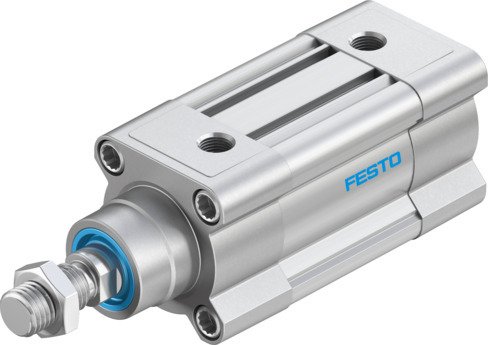The working principle of FESTOhttps://heiautomation.com/product/ cylinders is to convert the pressure of compressed gas into mechanical energy through pneumatic transmission. Specifically, compressed air or gas is sent into the cylinder, and the linear motion of the piston is driven by changing the pressure inside the cylinderhttps://heiautomation.com/product/.
The basic working principle of FESTO https://heiautomation.com/contact-us/cylinder is as follows:Pneumatic drive : When compressed air or gas enters a chamber of a cylinder (commonly referred to as a rodless chamber or a rod-bearing chamber) through the intake port, the air pressure in that chamber rises. Because the cylinderhttps://heiautomation.com/contact-us/ is divided into two separate chambers by the piston, namely the rodless chamber and the rod chamber, the change of air pressure will create a pressure difference between the two chambers .
Piston movement : This pressure difference acts on the piston, creating a thrust or pull that pushes the piston towards a chamber with lower air pressure. The movement direction of the piston depends on which chamber takes in air. For example, when air enters the rodless chamber and air exits the rod chamber, the piston will move towards the rod chamber, causing the piston rod to extend. Conversely, when air enters the rod chamber and air exits the rod chamber, the pisto
n moves towards the rod chamber, causing the piston rod to retract .
FESTO cylinder types and features include:Double-acting and single-acting : FESTO https://heiautomation.com/about/cylinders are available in both double-acting and single-acting types. Both chambers of the double-acting cylinder can be filled with air to achieve the bidirectional movement of the piston. Single-acting cylinders typically have only one chamber for intake, and the return motion of the piston depends on external forces such as spring force, diaphragm tension or gravity .
Buffer adjustment : The front and rear end covers of FESTO cylinders usually have a buffer adjustment function, which slows down the piston when it moves to both ends, avoiding impact and noise, and improving the stability and service life of the cylinder .
Precise control : By precisely controlling the inflow and outflow of gas and the changes in gas pressure, FESTO cylinders https://heiautomation.com/product/can achieve precise control of piston movement and are widely used in automated production lines, packaging equipment, robotics and other fields .
Application fields of FESTO cylinders include:Automated Manufacturing : In automated manufacturing, FESTO cylinders are used to drive various mechanical components, enabling the efficient operation of automated production lines.
Mechanical engineering : In mechanical engineering, FESTOhttps://studio.youtube.com/video/d-1jAFjjPHU/edit cylinders are used to control the movement of various mechanical equipment to improve production efficiency and precision.
Precision control : Due to its characteristic of precise control, FESTO cylinders are widely used in applications that require high-precision control, such as semiconductor manufacturing, precision instrument debugging,.
Introduction to festo Standard cylinders:A cylindrical metal component that guides the piston to perform linear reciprocating motion within the cylinder. Air in the engine cylinder converts thermal energy into mechanical energy through expansion. The gas is compressed by the piston in the cylinder of the https://www.facebook.com/profile.php?id=100087291657130compressor to increase its pressure. The casings of turbines, rotary piston engines, etc. are usually also called “cylinders”. The application fields of cylinders: printing (tension control), semiconductors (spot welding machines, chip grinding), automatic control, robots, etc.
Cylinder type:① Single-acting cylinder: It has a piston rod at only one end. Air is supplied from the piston side to gather energy and generate air pressure. The air pressure pushes the piston to produce thrust and extend, and it returns by a spring or its own weight. ② Double-acting cylinderhttps://heiautomation.com/festo-cylinders-versatile-applications-across-various-industries/: Alternately supplies gas from both sides of the piston and outputs force in one or both directions. 3 Diaphragm type cylinder: A diaphragm is used instead of a piston to output force in only one direction, and it is reset by a spring. It has good sealing performance, but a short stroke. ④ Impact cylinder: This is a new type of component. It converts the pressure energy of the compressed gas into the kinetic energy of the piston’s high-speed (10 to 20 meters per second) movement, thereby doing work.
⑤ Rodless cylinder: The general term for cylinders without piston rods. There are two major types: magnetic cylinders and cable cylinders.
